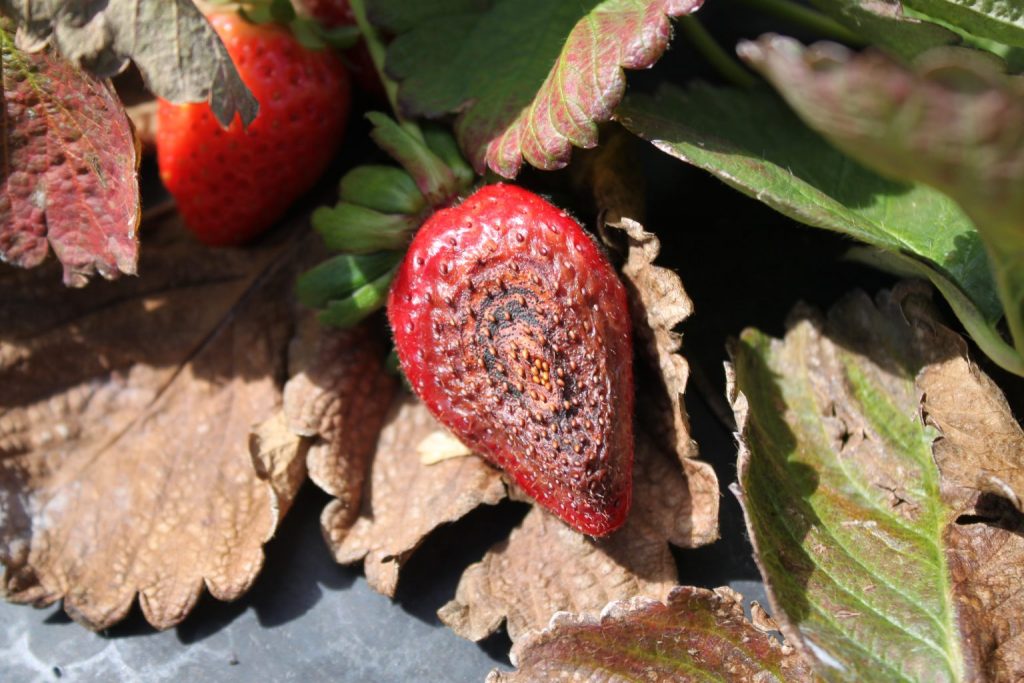
By Clint Thompson
Yield and quality remain at the forefront of Vance Whitaker’s focus as University of Florida/IFAS strawberry breeder. But not far behind is Neopestalotiopsis Fruit Rot.
“We always have to pay attention to yield and quality, but we’re definitely shifting a lot of effort toward it for sure,” Whitaker said. “It certainly has leapfrogged, probably most traits, at least, just due to the fact that there’s very limited other solutions for it so far, other than varietal resistance.”
It’s the disease that has Florida farmers concerned about its long-term impact. It has progressively worsened since it was first discovered on five farms during the 2018-19 season. It has expanded across the state and even moved northward to Georgia.
No Quick Solution
While Whitaker has emphasized the importance of this disease into his breeding efforts, a solution is not going to happen overnight.
“There’s different goals that I think you would say are short, medium and long-term. We can slightly increase levels of tolerance just by switching over to different varieties. The Medallion variety, which is a new one coming out, appears to be a little bit more tolerant than our current varieties. If there’s a switch into that variety, that could help growers in the immediate term, as in next year,” Whitaker said. “But as far as improving on that, that’s at least a four or five-year solution in terms of a new variety. In terms of really strong resistance, that’s an even longer type of approach.”
What’s really concerning for Florida producers is the disease’s tendency to linger in a field. At first, it was tied to a specific nursery. Industry leaders are now concerned about its ability to stay in a field. Even if producers switch nursery sources and bring in new plants, those could become infected if the disease is still present.
Weather Impact
“The prevalence in the Florida industry, it’s pretty wide-spread now. But it’s mainly that we don’t have any good cultural or chemical controls when weather conditions are really conducive for it, meaning multiple days of rainy type of conditions when the plants are wet. So far, when we’ve gotten periods like that with fields that are infected, it’s been really impossible to slow it down. But when the weather is drier, it tends to fade,” Whitaker said. “We’re kind of at the mercy of the weather in a lot of ways right now with it. That’s what’s so concerning because that’s really out of our control.
“It’s going to take a lot of time. We know that we have various levels of tolerance and resistance in different germplasm. We’ve gotten that far. But there’s a lot of things we still don’t know. We don’t know the genes. We don’t know, in a lot of cases, how quickly we’ll really be able to move because there’s so much that we don’t know so far. We’re still figuring a lot of that out.”
Disease Symptoms
Neopestalotiopsis causes leaf spots on strawberry plants. It develops quickly and produces spores on the leaves. It can cause severe leaf spotting and fruit rot under favorable weather conditions.









